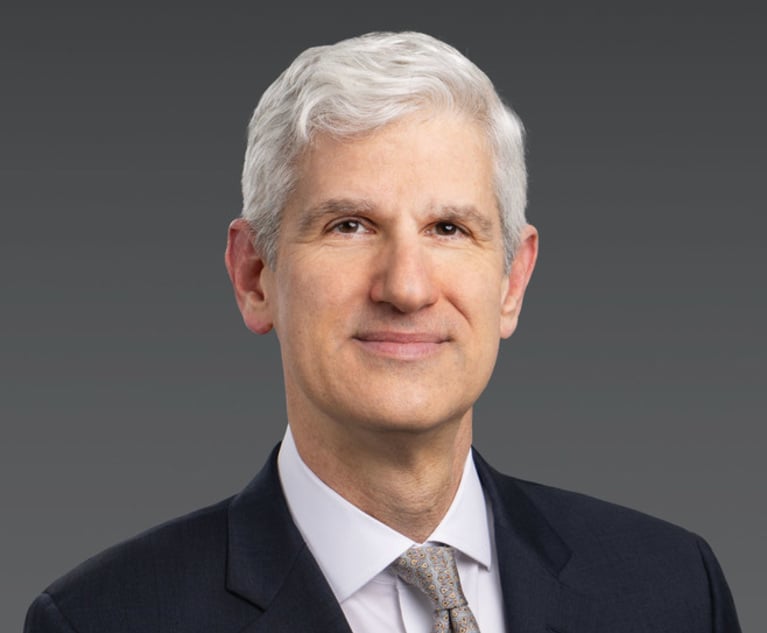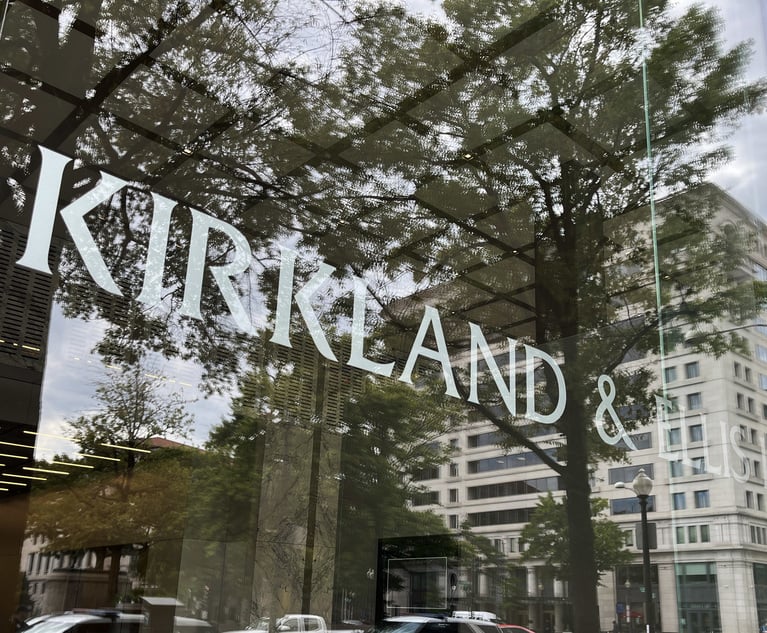If Cash Is King, Do Law Firms Need to Change Their Business Model to Keep Up?
In the midst of an economic crisis, the traditional operating model, in which firms strip the balance sheet clean at the end of each fiscal year, distributing all the profits to the partnership and starting fresh, looks more and more like a liability.
June 23, 2020 at 05:00 AM
10 minute read
 Credit: Roberto Jiménez/Shutterstock.com: Maria Siubar; V_E
Credit: Roberto Jiménez/Shutterstock.com: Maria Siubar; V_E
Self-sacrifice, at least of the rhetorical variety, is the order of the day among partners in a number of top law firms. As firms began to feel the financial effects of the COVID-19 pandemic in the early weeks of lockdown, scarcely a day went by without news of a major firm making cutbacks, almost always including reductions to partner compensation.
Couched as preparations for an uncertain future, a small number of firms have pared back nonlawyer staff. More have zeroed in on compensation. And where this has happened, a disproportionate amount of the burden has fallen on equity partners. "Reed Smith's owners, rightly, continue to bear the largest share of the financial burden of the firm's actions," reads an early-June message from managing partner Sandy Thomas, announcing a second wave of cuts at that global firm.
Indiana University law professor Bill Henderson sees the fact the partnership at many firms has preemptively moved to reduce draws as a sign of a newfound collective responsibility.
"It's one thing we've never seen before," he says, describing partners coming together to share risks and take steps to further their firms' long-term viability. It's also a response to external pressures: "Everyone in the market has been affected similarly, so that no one can decamp elsewhere."
But it's also true that the cutbacks come after three consecutive years of strong financial performance from the law firm sector. Data from the Am Law 100 firms shows revenue increases of 5% in 2019, 8% in 2018 and 5.5% in 2017. So do the sudden industrywide cutbacks reflect prudent fiscal management aimed at preserving profitability in unpredictable times, or are they emblematic of an industry that, as a whole, is not set up to withstand unexpected shocks?
There's certainly a legacy of law firms stripping the balance sheet clean at the end of the fiscal year, distributing all the profits to the partnership and starting fresh.
"This is a historical artifact of law firms that have grown up from a handful of partners sitting around the table to global behemoths," says Heidi Gardner, a distinguished fellow at Harvard Law School's Center on the Legal Profession.
But the number of firms that categorically return all profits to their equity partners, without any financial engineering, is shrinking. Instead, firms now take a variety of approaches. Some operate with a model that involves holding onto a portion of profits at the end of each year to fuel investments and protect against exigent circumstances. Others employ workarounds that ensure some portion of earnings is retained but partners are not forced to pay taxes on profits they aren't able to pocket. And still others delay distributions beyond the end of their fiscal year to ensure a reserve for growth initiatives.
Michael McKenney, who leads credit origination as managing director of the Citi Private Bank Law Firm Group, looks at these measures and concludes that the industry entered the coronavirus crisis on much firmer footing than it stood on prior to the Great Recession.
"If we look back to 2008-09, we'll see that the industry has been very thoughtful and very deliberate to make sure that some of the lessons learned in that prior period are being acted upon currently," he says.
For McKenney, the sea change lies in how firms view capitalization. Partners are now expected to have much more skin in the game.
"They have a much stronger capital base and a more solid relationship with the financial markets," he says of law firms as a whole. Firms that previously relied on "demand" lines of credit, where lenders can ask for repayment as they wish, now have solid committed-credit facilities. These include covenants serving as "financial guardrails" for firms, obligating them to exhibit good financial health and operating characteristics.
Baker McKenzie offers one example of that transition, according to chief financial officer Paul Eichelman. At the time of the Great Recession, the firm relied more on debt than partner capital. And while its global footprint and diversified practice mix positioned it to survive the financial crisis with limited pain, the wider economic upheaval pushed it to reevaluate its tactics.
"We felt too reliant on debt," he says. In 2016, when a committee of partners reviewed the firm's financial mix, they elected to increase the size of the firm's capital reserves. In practice, that means that every year partners return a portion of annual profits as their capital contribution, compared with other firms where equity partners are responsible for making an upfront investment upon joining the partnership.
"It creates a level of predictability that our partners like," Eichelman adds.
There are other strategies for ensuring a firm's cash reserves are replenished every year. At least one Am Law 100 firm draws on profits to prepay office rent for the upcoming year. Others will hold onto as much as 40% of their profits for the year after they're earned, and equity partners aren't made whole until four months into the next fiscal year. "That's a cushion the firm will use to operate in the first half," McKenney says.
Gretta Rusanow, head of advisory services for the Citi Law Firm Group, says their survey work across the industry since March reveals that firms have been holding onto last year's profits for longer than usual to help manage cash flow.
That option is not available to Cozen O'Connor. Organized as a PC rather than an LLP, the firm has to return all profits to equity partners in the same calendar year they are earned in order to prevent partners from paying taxes on profits they don't receive. Nonetheless, the firm and its partners have historically been comfortable with setting a portion of profits aside, regardless of tax implications, to face the unexpected or to seize opportunities for growth, according to chairman and CEO Michael Heller.
"We have always believed in retaining earnings, whether it's to invest in people or technology, and to provide a cushion should there be a downturn," he says. "We believe that's just good corporate governance."
Henderson doesn't believe that fear of the tax code should discourage other firms from proceeding similarly. He notes that most major U.S. businesses, organized as C corporations, pay taxes on earnings and then face a second layer of taxes when they pay out dividends. Were law firms to reorganize in such a way in order to facilitate the retention of earnings, partners' tax burden would go up. A structural explanation, rooted in the technicalities of law firm organization, doesn't do enough to account for that ingrained practice of operating with limited cash reserves.
"I think it's cultural," Henderson says of those firms that are still resistant to retaining earnings. "So much of what it takes to get a law firm to go is law-firm lawyers building their practice around an area of specialty. The larger it gets, the less you know the people you're sharing risk with."
That makes many lawyers hostile to the idea of directing their hard-earned revenue toward some nebulous priorities over which they lack control.
"Give me a nice brand, some Class-A office space, recruit some decent associates," he says of their thought process. "I know how much I'm billing and collecting, and I expect to keep the vast majority of it, except for the people helping me. Take too much of it, and I'll lateral across the way."
That's harder in the current moment, with the lateral market narrowing to focus on a smaller number of proven stars in high-demand practices. Still, whether a firm is holding onto promised distributions for weeks longer than once expected, or making larger structural changes to financial management, partners will need to be mollified. The ease of doing so varies by firm.
"Firms that are able to make big changes or bolder moves are going to need leadership to drive those changes, though—not just to introduce them but to make them sustainable," Gardner says.
Leaders will find it easier to institute such changes in firms with an established track record of planning for the future. Perkins Coie managing partner Bill Malley only assumed the top role at his firm in 2019, but he says he's been aided by a partnership culture that recognizes the value of investing for the long term. Consequently, not only does the firm have a strategic plan that guides investment decisions in good times and bad times, it takes pains to communicate the specifics not just to partners but to all attorneys and personnel.
"When you do that—and do that before you have a time of economic disruption—you create a common understanding of where your business is going," Malley says. "That provides the starting point of building partner consensus around investment decisions."
Henderson, who praises Perkins Coie, Baker McKenzie and a handful of other firms for their success retaining earnings to invest in improved processes and technology, describes a virtuous cycle: Firms that possess "firm-specific capital" are in a stronger position to ensure their partners stay put and comply with leaders' forward-thinking initiatives.
Outfits rich in that asset draw in clients because of what the institution offers, not individual partners. And clients will stay put, regardless of whether or not partners move.
"If your firm has firm-specific capital, they can retain earnings," Henderson says. "That's how Kirkland can recruit all those laterals. That was fairly capital intensive, but they used retained earnings to fuel that investment in star talent."
If Kirkland is one aspirational example, another one is the Big Four. One factor fueling the accounting firms' steady march into the legal services arena is their mastery of processes and efficiency, all a consequence of hefty internal investment. Another factor is their reputation for sterling client service. That extends to other players in the wider professional services sphere.
"At McKinsey, we really did live and breathe clients first," says Gardner, who spent five years with the company before she began researching professional services firms.
Indeed, many of the statements from firms confirming their recent compensation cuts have taken pains to emphasize that resources devoted to client services will remain amply funded. It's rhetoric, but it also acknowledges a long-term outlook.
"Clients are better off when firms are led and structured in ways that help people understand that it is not an individualistic play. They need to be structured and led in a way that people understand there's no conflict of interest between what's good for them, what's good for the firm and what's good for the client," Gardner says. "There's a lot of conventions in standard legal practice that make sure these three don't have full alignment."
Maybe it's a spot of good news in an otherwise bleak time that some of those conventions appear to be eroding.
Email: [email protected]
This content has been archived. It is available through our partners, LexisNexis® and Bloomberg Law.
To view this content, please continue to their sites.
Not a Lexis Subscriber?
Subscribe Now
Not a Bloomberg Law Subscriber?
Subscribe Now
NOT FOR REPRINT
© 2025 ALM Global, LLC, All Rights Reserved. Request academic re-use from www.copyright.com. All other uses, submit a request to [email protected]. For more information visit Asset & Logo Licensing.
You Might Like
View All
Paul Hastings, Recruiting From Davis Polk, Adds Capital Markets Attorney
3 minute read
Kirkland Is Entering a New Market. Will Its Rates Get a Warm Welcome?
5 minute read

Goodwin Procter Relocates to Renewable-Powered Office in San Francisco’s Financial District
Law Firms Mentioned
Trending Stories
- 1US DOJ Threatens to Prosecute Local Officials Who Don't Aid Immigration Enforcement
- 2Kirkland Is Entering a New Market. Will Its Rates Get a Warm Welcome?
- 3African Law Firm Investigated Over ‘AI-Generated’ Case References
- 4Gen AI and Associate Legal Writing: Davis Wright Tremaine's New Training Model
- 5Departing Attorneys Sue Their Former Law Firm
Who Got The Work
J. Brugh Lower of Gibbons has entered an appearance for industrial equipment supplier Devco Corporation in a pending trademark infringement lawsuit. The suit, accusing the defendant of selling knock-off Graco products, was filed Dec. 18 in New Jersey District Court by Rivkin Radler on behalf of Graco Inc. and Graco Minnesota. The case, assigned to U.S. District Judge Zahid N. Quraishi, is 3:24-cv-11294, Graco Inc. et al v. Devco Corporation.
Who Got The Work
Rebecca Maller-Stein and Kent A. Yalowitz of Arnold & Porter Kaye Scholer have entered their appearances for Hanaco Venture Capital and its executives, Lior Prosor and David Frankel, in a pending securities lawsuit. The action, filed on Dec. 24 in New York Southern District Court by Zell, Aron & Co. on behalf of Goldeneye Advisors, accuses the defendants of negligently and fraudulently managing the plaintiff's $1 million investment. The case, assigned to U.S. District Judge Vernon S. Broderick, is 1:24-cv-09918, Goldeneye Advisors, LLC v. Hanaco Venture Capital, Ltd. et al.
Who Got The Work
Attorneys from A&O Shearman has stepped in as defense counsel for Toronto-Dominion Bank and other defendants in a pending securities class action. The suit, filed Dec. 11 in New York Southern District Court by Bleichmar Fonti & Auld, accuses the defendants of concealing the bank's 'pervasive' deficiencies in regards to its compliance with the Bank Secrecy Act and the quality of its anti-money laundering controls. The case, assigned to U.S. District Judge Arun Subramanian, is 1:24-cv-09445, Gonzalez v. The Toronto-Dominion Bank et al.
Who Got The Work
Crown Castle International, a Pennsylvania company providing shared communications infrastructure, has turned to Luke D. Wolf of Gordon Rees Scully Mansukhani to fend off a pending breach-of-contract lawsuit. The court action, filed Nov. 25 in Michigan Eastern District Court by Hooper Hathaway PC on behalf of The Town Residences LLC, accuses Crown Castle of failing to transfer approximately $30,000 in utility payments from T-Mobile in breach of a roof-top lease and assignment agreement. The case, assigned to U.S. District Judge Susan K. Declercq, is 2:24-cv-13131, The Town Residences LLC v. T-Mobile US, Inc. et al.
Who Got The Work
Wilfred P. Coronato and Daniel M. Schwartz of McCarter & English have stepped in as defense counsel to Electrolux Home Products Inc. in a pending product liability lawsuit. The court action, filed Nov. 26 in New York Eastern District Court by Poulos Lopiccolo PC and Nagel Rice LLP on behalf of David Stern, alleges that the defendant's refrigerators’ drawers and shelving repeatedly break and fall apart within months after purchase. The case, assigned to U.S. District Judge Joan M. Azrack, is 2:24-cv-08204, Stern v. Electrolux Home Products, Inc.
Featured Firms
Law Offices of Gary Martin Hays & Associates, P.C.
(470) 294-1674
Law Offices of Mark E. Salomone
(857) 444-6468
Smith & Hassler
(713) 739-1250









